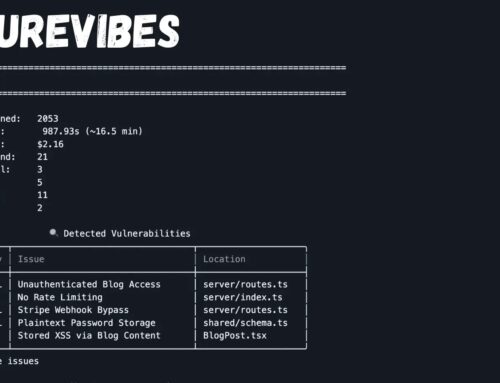
Danabot Malware Resurfaced with Version 669 Following Operation Endgame
Danabot’s Resurgence: Version 669 Emerges, Threatening Financial Landscapes
The digital threat landscape is in a constant state of flux, with malicious actors continuously refining their tools and techniques. A prime example of this relentless evolution is the recent re-emergence of Danabot, a notorious banking Trojan. Following a period of relative dormancy, largely attributable to the impactful Operation Endgame law enforcement sweep, Danabot has resurfaced with a formidable new iteration: Version 669. This comeback is not merely a ripple; it signifies a significant new wave of cybercrime, directly targeting financial institutions, cryptocurrency platforms, and individual users with increasingly sophisticated multi-stage attacks.
Operation Endgame’s Aftermath and Danabot’s Adaptation
Operation Endgame, a coordinated international law enforcement effort in May 2024, struck a critical blow against several prominent malware families and their accompanying infrastructure. While this operation undeniably disrupted threat actors, it also served as a catalyst for adaptation. Danabot, with its established legacy as a potent banking Trojan, has evidently used this downtime not for capitulation, but for re-architecting and strengthening its capabilities. The rapid development and deployment of Version 669 underscore the resilience and persistent threat posed by these criminal organizations, demonstrating their swift ability to rebuild and refine their malicious ecosystems.
Understanding Danabot’s Evolving Threat Model
Danabot has historically been a versatile and evasive piece of malware, capable of a range of malicious activities beyond just credential theft. Its resurgence with Version 669 implies enhancements in several critical areas:
- Advanced Evasion Techniques: Expect new methods to bypass updated security defenses, including enhanced anti-analysis and anti-detection mechanisms.
- Multi-Factor Authentication (MFA) Bypass: Modern banking Trojans frequently incorporate techniques to circumvent MFA, and Version 669 is likely to feature updated strategies for this.
- Improved Command and Control (C2) Infrastructure: The new version will undoubtedly leverage more resilient and difficult-to-dismantle C2 networks, likely employing decentralized or encrypted communication channels.
- Expanded Target Scope: While traditionally focused on banking credentials, the mention of cryptocurrency users suggests an expanded focus on digital assets, potentially including wallet access and transaction interception.
- Sophisticated Attack Chains: The phrase “sophisticated multi-stage attacks” indicates a move towards more complex infection vectors, potentially involving social engineering, spear-phishing, malvertising, and chained exploits to achieve initial access and subsequent privilege escalation.
Remediation Actions and Protective Measures
Defending against an advanced threat like Danabot Version 669 requires a multi-layered and proactive cybersecurity strategy. Organizations and individuals must prioritize robust security practices to mitigate the risks.
- Endpoint Detection and Response (EDR)/Extended Detection and Response (XDR): Deploy and meticulously monitor EDR/XDR solutions. These tools are crucial for detecting unusual activity, identifying post-exploitation behaviors, and responding swiftly to potential compromises.
- Strong Email Security Gateway (ESG): Implement powerful email security solutions capable of detecting and blocking sophisticated phishing attempts, malicious attachments, and weaponized links, which are common initial infection vectors for Trojans.
- Regular Security Awareness Training: Continuously educate employees and users on identifying phishing emails, suspicious links, and social engineering tactics. A well-informed user base is a critical defense line.
- Patch Management: Maintain a rigorous patch management program, ensuring all operating systems, applications, and browsers are updated to their latest versions. Unpatched vulnerabilities (e.g., CVE-2023-38831, which could be exploited in a broader attack chain) are frequently exploited by sophisticated malware.
- Multi-Factor Authentication (MFA) Everywhere: Implement strong MFA for all critical accounts, especially those related to banking, finance, and cryptocurrency. Even if Danabot attempts bypasses, MFA adds a significant layer of difficulty for attackers.
- Network Segmentation: Segment networks to limit lateral movement if an infection occurs. Isolating critical systems can prevent wide-scale compromise.
- Threat Intelligence Feeds: Subscribe to and integrate up-to-date threat intelligence feeds to understand the latest Danabot indicators of compromise (IoCs) and attack techniques.
- Web Application Firewalls (WAFs): For financial institutions, WAFs can help protect web applications from common web-based attack vectors that could be part of a multi-stage Danabot ploy.
Essential Tools for Detection and Mitigation
| Tool Name | Purpose | Link |
|---|---|---|
| Threat Intelligence Platforms (e.g., MISP, Anomali) | Aggregates and shares threat intelligence, including IoCs for malware like Danabot. | https://www.misp-project.org/ |
| Endpoint Detection and Response (EDR) Solutions | Real-time monitoring, detection, and response to endpoint security incidents. | (Vendor Specific – e.g., CrowdStrike, SentinelOne) |
| Network Intrusion Detection/Prevention Systems (NIDS/NIPS) | Monitors network traffic for suspicious activity and known attack signatures. | (Vendor Specific – e.g., Snort, Suricata) |
| Email Security Gateways (ESGs) | Filters and blocks malicious emails, phishing attempts, and spam. | (Vendor Specific – e.g., Proofpoint, Mimecast) |
| Vulnerability Scanners (e.g., Nessus, OpenVAS) | Identifies security weaknesses and misconfigurations in systems and applications. | https://www.tenable.com/products/nessus |
Conclusion
The re-emergence of Danabot with Version 669 following Operation Endgame serves as a stark reminder of the persistent and adaptive nature of cyber threats. This event underscores the critical necessity for continuous vigilance, proactive security measures, and rapid adaptation in defense strategies. Financial institutions, cryptocurrency platforms, and individuals must immediately reassess and bolster their defenses against this evolved banking Trojan. Ignoring this resurfacing threat is not an option; a robust, multi-layered security posture is the only reliable defense against Danabot’s renewed assault on our digital financial ecosystem.





